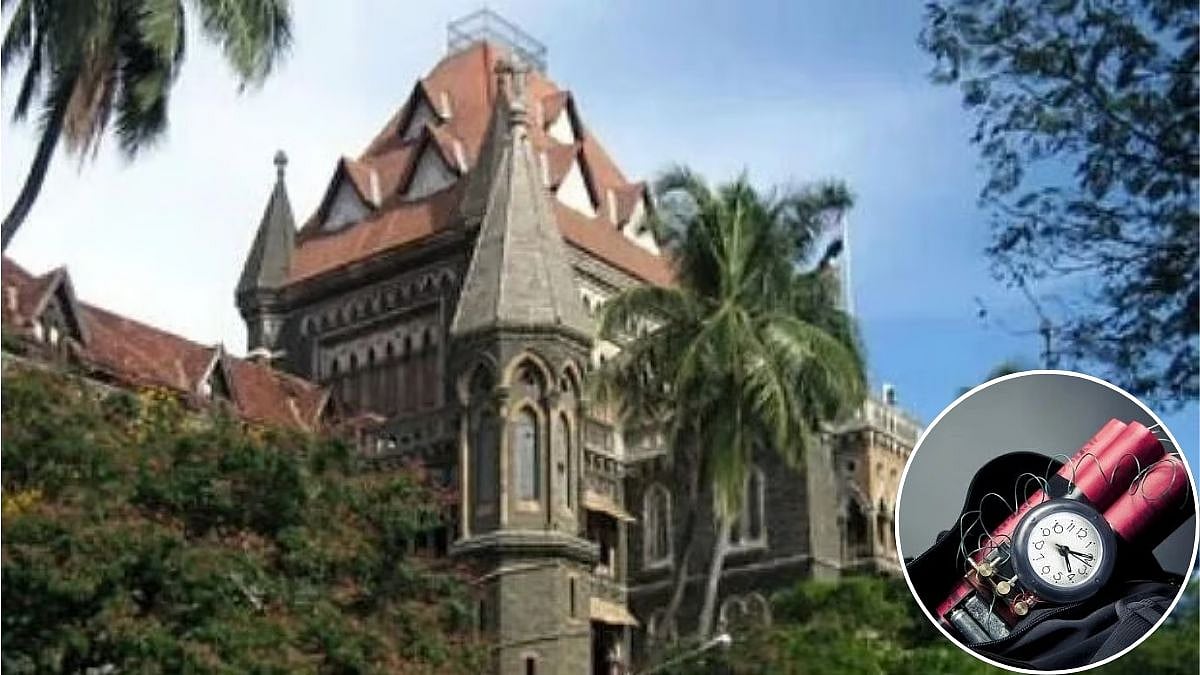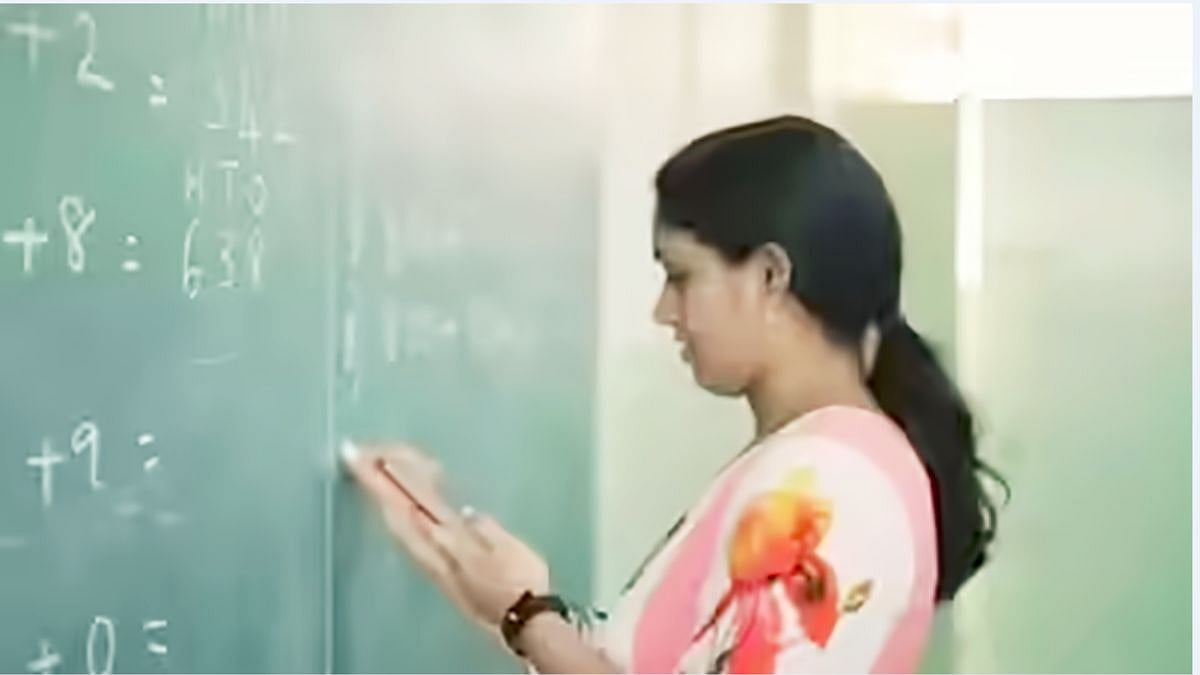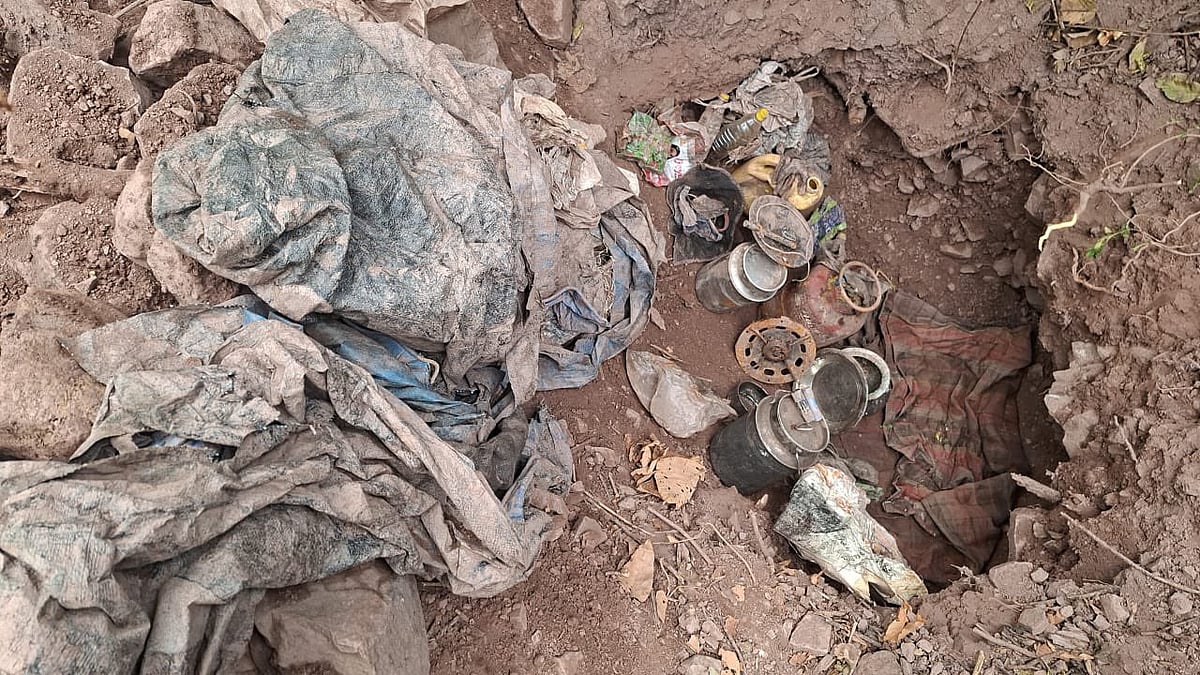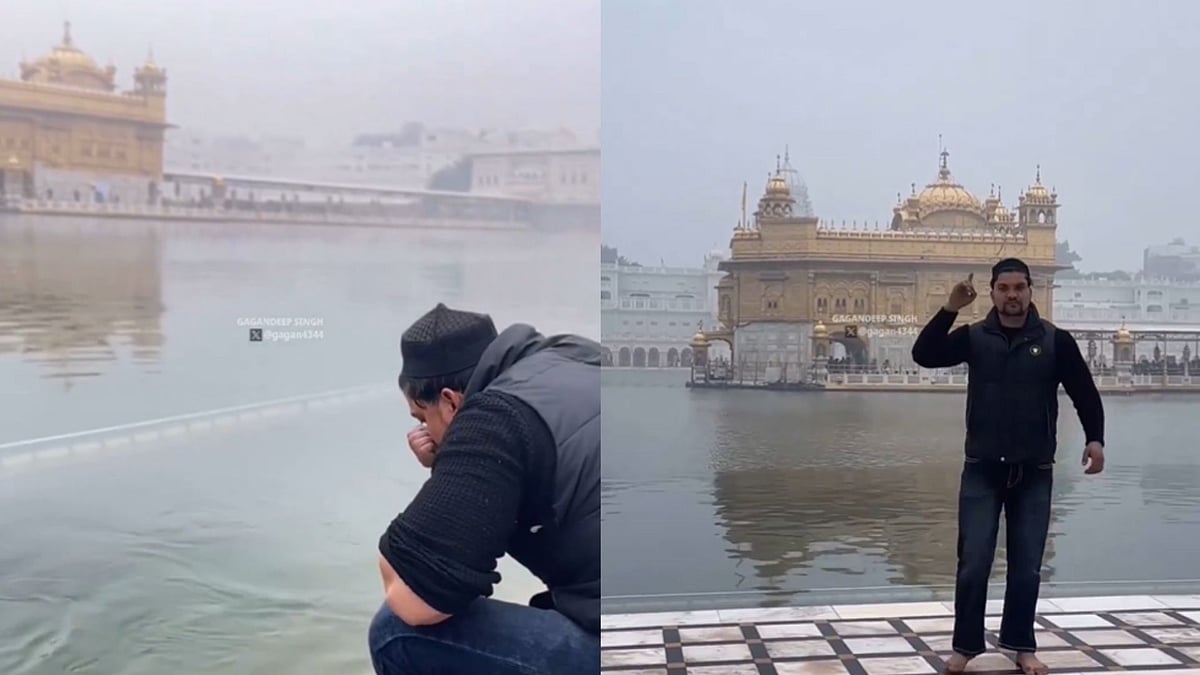Between 1990 and 2005, Bihar was a socialist utopia, an Ayn Rand-land, where the sub-altern finally exerted their voice and reversed years of upper-caste tyranny. It was a land where the daughter of a milkman could go on to top the MBBS exam and her brother a state-level cricketer.
It was of course complete hogwash, and if one were to look at the level of lawlessness, any Indian state would find it hard to compete with Bihar of the 90s and early 2000s.
Lalu Prasad Yadav’s reign was a reminder that nepotism, casteism, Mafia Raj and self-inducement through state coffers was no longer the preserve of upper-caste elites.
Bihar gave us many firsts. One of the oldest universities ever, perhaps the first historical instance of booth capturing, and perhaps the first non-elite sub-altern politician with a mass following, who could win elections single-handedly.
As Prem Shankar Jha noted in his review of Sankarshan Thakur’s book on Lalu Prasad Yadav, the former Bihar CM threw a new kind of challenge to a previously elite democratic system: “The democratic system worked so long as the leadership remained peppered with educated people capable of understanding, however dimly, the multiple challenges of nation building. Lalu’s uniqueness lies in the fact that he has not only no inkling of these challenges but is supremely uninterested in finding out about them.”
The 'inkling' bit might be a bit off given Lalu's history with student politics and the JP movement but one can fairly agree that he was 'uninterested in nation building'. The country bumpkin image was one for the masses, even though one must say it was the norm and not the exception amid Biharis.
Of course, there are people – particularly Delhi-based journalists and Mumbai-based socialites -- who wouldn’t be able to name their own MLAs with a gun to their heads -- who get nostalgic about Lalu Prasad Yadav.
If they lived in Bihar in that era, their ostentatious display of wealth would’ve seen a literal gun to their heads unless they were in hand-in-glove with powers-that-be.
While most Indians laughed when a Qureshi threatened a cop in Anurag Kashyap’s magnum opus GoW with the line “Wasseypur hai. Yahan kabootar bhi ek pankh se udta hai, aur doosre se apna ijjat bachata hai”, residents of Bihar viewed it as a grim tragicomic reality.
Lalu Prasad Yadav – the beginning
All socialist parties in India find their anti-Congress brand of politics from Ram Manohar Lohia’s socialism which stated sudharo ya todo (reform or break).
This perhaps explains why there are over 20 splinter parties of various socialist movements including JD(U), JD(S), RJD, LJP, INLD and BJD.
Of these movements was born the most potent proponent of socialism.
Lalu Prasad Yadav June 11, 1938, the youngest son of a poor cow herder in Gopalganj, an upbringing he’d milk as much as PM Modi reminds us of anecdotal tea-selling.
The childhood tales of pranks appears to mirror Krishna’s butter thievery, a lineage with obvious benefits amid Yadavs. Interestingly, his son now loves cosplaying as both Krishna and Radha.
He grew as a student leader becoming the President of the Patna University Students Union out of which was born the Bihar Chhatra Sangarsh Samiti which saw him take centre-stage with other future leaders like Ram Vilas Paswan and Sushil Kumar Modi.
Making his bones with JP’s Bihar movement, he became the youngest MP at that time from the Chhapra Lok Sabha Constituency.
A few years later, he would become the Bihar CM under the Janata Dal aegis before splitting and forming his own party the Rastriya Janata Dal (RJD) in 1997.
State of Anarchy
A report by the Bihar State Intelligence Bureau, suppressed in 1997 by Governor AR Kidwai and PM IK Gujral noted that Lalu was the ‘patron saint of a third of the 120 or so dacoits gangs active in the state’.
Those who dream of a police-less state amid the George Floyd protests should’ve seen Lalu’s Bihar. It was the norm for local police officers to double up as thieves’ wingmen.
As Twitter user Gabbbar noted, surprising Instagrammers posting stories about fascism: “I grew up in Lalu’s Bihar When Lalu’s daughter was getting married in Patna, Lalu’s brother-in-law Sadhu Yadav forcefully took away more than 100 cars from the car showrooms, to ferry wedding guests from the airport. Those who didn't comply, their showrooms were damaged.”
This was the norm rather than the exception. Anyone who made any money hid it.
Even something as ostentatious as buying a Maruti 800, could lead to a friendly visit. Affluent parents, lest their children get kidnapped would actually send their wards to boarding schools. Electricity was a pipe-dream and everyone who could afford it had generators.
The late 90s and early 2000s were chock-a-block with tales of wanton violence.
One of the most famous cases involved the ‘Sahab of Siwan’ Mohammad Shahbuddin, who had hitched his wagon early to Lalu’s horse. He had a history of wanton violence including gunfights with Bihar Police, a journalist’s murder and abduction of political opponents.
Then there was the infamous rape-murder case of 1999, when a college student called Shilpi Jain and her boyfriend, were found naked and dead.
The main suspect was Lalu’s brother-in-law Sadhu Yadav and the CBI couldn’t even collect his DNA sample.
CBI finally claimed that it was a suicide, even though one never truly understood why one would take off one’s clothes before committing suicide.
Despite all this, Lalu would be beatified by liberals. Perhaps because of what follows next.
Secular Hero - stopping Advani in his tracks
While the Mumbai riots that followed post the Babri demolition garnered the most attention, it was the Bhagapur riots of 1989 which showed the discourse the Ram Janmabhoomi movement would sow. It was also when the Muslim community, at least in Bihar, gave up on the Congress (I).
In Bhagalpur, they held the Congress firmly responsible for the riots, as did the Justice NN Singh Commission which blamed the Congress for ‘effete political leadership” and an “in built” communal bias, a state apparatus either negligent or complicit which meant the riots spread like wildfire, the casualty lists swelled with names from the minority community’.
Lalu Prasad Yadav, who blamed Advani for the riot years later, would stop the BJP stalwart in his tracks on October 23, 1990 in Samastipur, Bihar. He did so even though they were part of the Janata coalition. PTI journalist SD Narayan recalls how Lalu called him early in the morning tell him that he nabbed Advani, something various state governments were raring to do.
Later on Lalu wrote that even though the Janata government fell, he arrested LK Advani to protect ‘the nation and defend the Constitution of India’.
It was a temporary reprieve and there was no stopping the Ram Janmabhoomi agitation as the Babri Masjid was finally brought down.
It also triggered massive protests across North India. But secularism would remain Lalu Prasad Yadav’s calling card for years to come and he became the tallest leader unequivocally speaking for Muslim rights. At times, it even had a hilarious side-effect like the time he used an Osama Bin Laden lookalike to woo voters, something almost unthinkable in post-9/11 world and even angering Muslim organisations.
The Mandal Commission Report
The Mandal Commission report seeking to identify and give reservations to OBCs was kept on the backburner for 10 years by Indira Gandhi and Rajiv Gandhi but Lalu claims he convinced VP Singh to released the report and the VP Singh govt – to counter claims of being upper-caste by Devi Lal – promised reservations for 27% OBCs.
Yadav writes in his book that it was a ‘way out’. The release of the report led to nationwide protests with 75 upper-caste youngsters committing suicide through self-immolation and 200 other dying in clashes with cops.
Railways Mirage
Lalu Prasad Yadav became the toast of business schools across the globe, including Harvard during his tenure as Railway Minister where he claimed a cash surplus of Rs 90,000 crore which led many to wonder why Lalu couldn’t replicate that in Bihar during his 15-year rule.
However, a white paper by the next Railway Minister Mamata Banerjee claimed that Lalu Prasad Yadav had ‘inflated cash surpluses by changing account procedures’. Traffic growth was also below par, and the Railways was charging excess for Tatkal even as punctuality took a beating.
Despite these reversals, Yadav remained an important ally to Sonia Gandhi and Manmohan Singh in both UPA eras.
Corruption and Nepotism
Pegged at Rs 960 crore, the Chara Ghotala referred to large-scale embezzlement to non-existent companies for purchase and supply of cattle fodder. Under pressure from Janata Dal, Lalu resigned in 1997 but formed his own party Rashtriya Janata Dal and installed his wife Rabri Devi as CM of Bihar, a hitherto unseen move in Indian politics.
He ended up being charged, earning a jail sentence of nearly 13-and-a-half years.
While others attempted to hide their nepotism, subtly was never part of the Lalu Prasad Yadav playbook. Two of his daughters became doctors, Misa Bharti was even the topper of her MBBS exam at Patna Medical College and Tejashwi Pratap Yadav was on the Delhi Daredevil books for four years without playing a single game.
Final Swansong
Lalu Prasad Yadav was finally defeated in 2005 but it took Nitish and NDA, two elections, not to mention fighting a supremely unscrupulous Bihar Governor who was castigated by the Supreme Court.
However, Lalu Prasad Yadav did manage one last swansong in 2015.
With Nitish Kumar fuming about Narendra Modi’s elevation as Prime Minister, the RJD supremo backed his long-term enemy to defeat what many believed to be an unstoppable BJP juggernaut. RJD became the single-largest party in Bihar and Lalu Prasad Yadav got one last chance to use the oratorical skills he had honed since he was a student leader.
Alas the partnership, which Nitish Kumar had called that of a ‘snake entwined across a sandalwood’, didn’t last and Nitish ran back to the NDA fold.
Currently, it looks unlikely that Nitish Kumar will leave the NDA fold, nor will the BJP be willing to let him go after the debacle of Maharashtra.
Sadly, none of Lalu’s wards have been able to carry forward the legacy of the Green Lantern.
Despite being the single-largest party in 2015, the 2019 Lok Sabha return was poor.
What made Lalu Prasad Yadav tick?
Lalu Prasad Yadav was the first proper subaltern leader who unabashedly gave Muslims and Yadavs a voice when there was no one to speak for them.
He was a CM who spoke like a panchayat leader.
In a state full of upper-caste Congress CMs, Lalu Prasad Yadav was a revelation. With urbanites, he played the Shakespearean fool, fully giving into all the stereotypes that exist of Biharis.
He used all his rustic charm and charisma to craft an image of a lovable buffoon, a sort of pre-Trump Bihari babu who spoke the language of the people he represented.
In a state where the shots were always called by upper-caste Congress CMs, his appeal refused to wane. Till it did.
Unless a miracle happens, it’s quite unlikely that vagaries of Indian politics will throw up another like him.
Lalu Prasad Yadav’s elevation was met with disdain but in his own way he changed caste politics but is no longer in flavour.
Politicians with caste-based votebanks like Mayawati and Akhilesh Yadav are finding it hard to remain relevant amid the the BJP-RSS project to create a Hindutva monolith. The demand for caste-secular politics is at an all-time low.
Perhaps, it’s time to retire the old saying: “Jab tak rahega samosa mein aloo…”
Further reading:
Lalu Prasad – Autumn of the patriarch
Why I arrested Advani on Oct 23, 1990
Arrest of LK Advani, the incident that bled India but gave BJP political heft
Disclaimer: The views expressed are the author's own.
Nirmalya Dutta is the Web Editor of The Free Press Journal.











